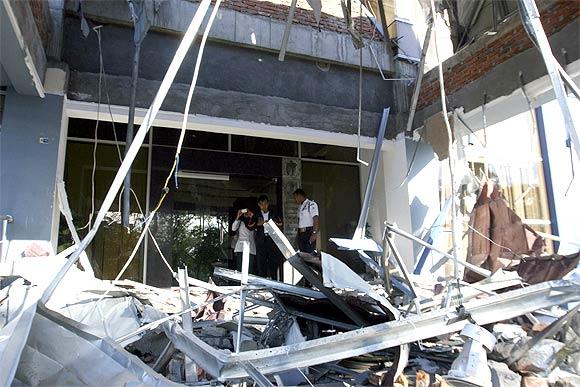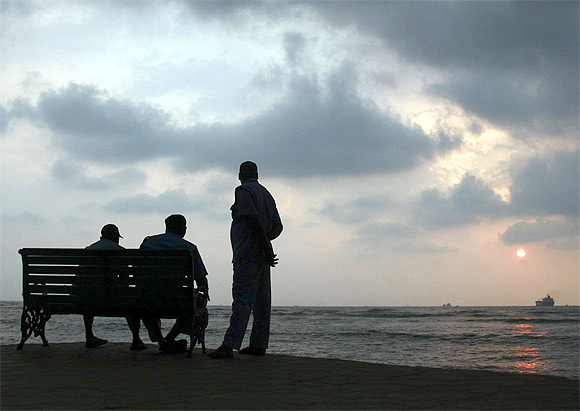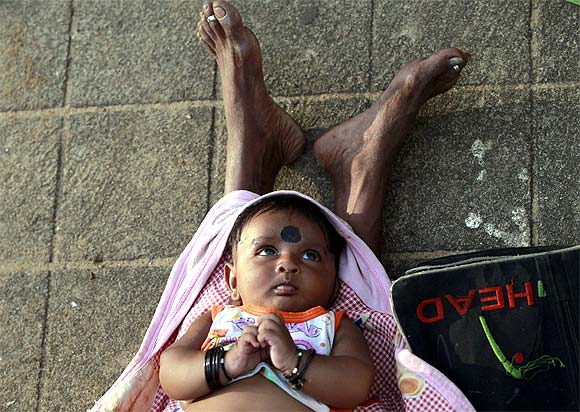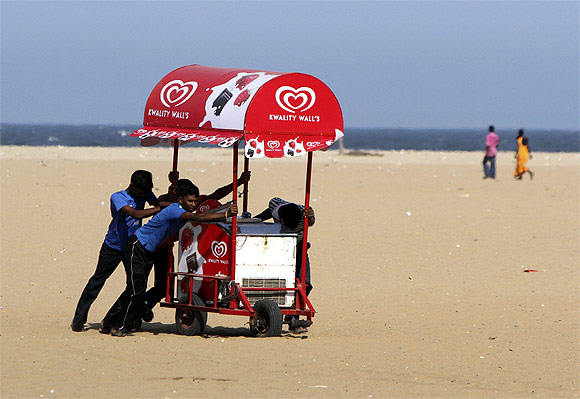 | « Back to article | Print this article |
India is today READY to face a tsunami
The early warning system gives Indian authorities sufficient time for action, says Gyan Varma & Sreelatha Menon
An earthquake struck twice near Indonesia, with an intensity of 8.5 on the Richter scale, which could have generated a tsunami that could have struck the eastern coast of India.
However, it failed to generate a vertical displacement of ocean waters and, thus, did not cause a tsunami on Wednesday, the National Disaster Management Authority said.
Between the earthquake and the tsunami alert, there was an interval of just 20 minutes. Within half an hour, the alert was called off.
The rapid warnings issued by the government through the NDMA on Wednesday revealed the speed at which tsunami warnings can be given. NDMA gives all credit to the ocean bottom pressure recorders put in vulnerable areas of the Indian Ocean by the Indian government in 2007, within three years of the 2004 tsunami that caused large-scale devastation on the eastern coast.
Click on NEXT for more...
India is today READY to face a tsunami
While Wednesday's earthquake struck Indonesia at 2.08 pm, the tsunami alert followed 20 minutes later. But, by 3 pm, it was clear to all those connected to the Indian National Centre for Ocean Information Services that there was no danger of a tsunami and it wouldn't affect India, officials in NDMA said, giving credit to the early warning system of INCOIS for the quick information.
The government information was based on inputs from the ocean-based Tsunami Early Warning Centre and INCOIS, both located at Hyderabad. It is INCOIS which interprets the data from the recorders and disseminates it on its website on a regular basis, benefiting all countries in the area.
According to Harsh Gupta, former secretary of the department of ocean development and now member of the NDMA, the earthquake that struck Indonesia was 8.7 in magnitude on the Richter scale, and, normally, would generate a tsunami.
Click on NEXT for more...
India is today READY to face a tsunami
The height can be five metres and can touch Indira Point, the southernmost latitude in India. On the east coast, the height can be two metres, touching Tamil Nadu. However, it was not an earthquake with a vertical motion, which is a necessary condition for generating a tsunami.
It was a strike slip quake which does not generate a vertical displacement of ocean water, Gupta said.
So, while earthquake is a necessary condition for a tsunami it is not a sufficient condition for it, Gupta said.
The ocean bottom has to be vertically displaced to create a tsunami. When the second earthquake struck at 4 pm, there was no tsunami alert from the ocean bottom pressure recorders and, hence, no alert was issued, Gupta says.
Gupta says that the tsunami alert on Wednesday and its quick withdrawal is in contrast to the slow reaction that was possible seven years ago when a tsunami struck with deadly force on December 26 in 2004. Three days later, it was decided that an early warning system should be set up by India, says Gupta.
Click on NEXT for more...
India is today READY to face a tsunami
The Department of Ocean Development went on to install ocean bottom pressure recorders close to two zones in the Indian Ocean that were most likely to generate earthquakes. These were near Java Sumatra to Andaman Nicobar and second at Makaran coast in the Arabian Sea.
Gupta said that even if a tsunami strikes, death would be nil. The early warning gives sufficient time for action, he adds.
These covered 4,000 km. The recorders became operational on September 7, 2007, and have since been tested a couple of times. INCOIS generates bulletins which are accessible to all countries that are also helped by the warnings, says Gupta, who is partially responsible for setting up the system.
Had the system been installed in 2004, the deaths caused by the tsunami could have been avoided, says Gupta.
"We would have known 2.5 hours in advance," he says.
Click on NEXT for more...
TOP photo features of the week
Click on MORE to see another set of PHOTO features...





